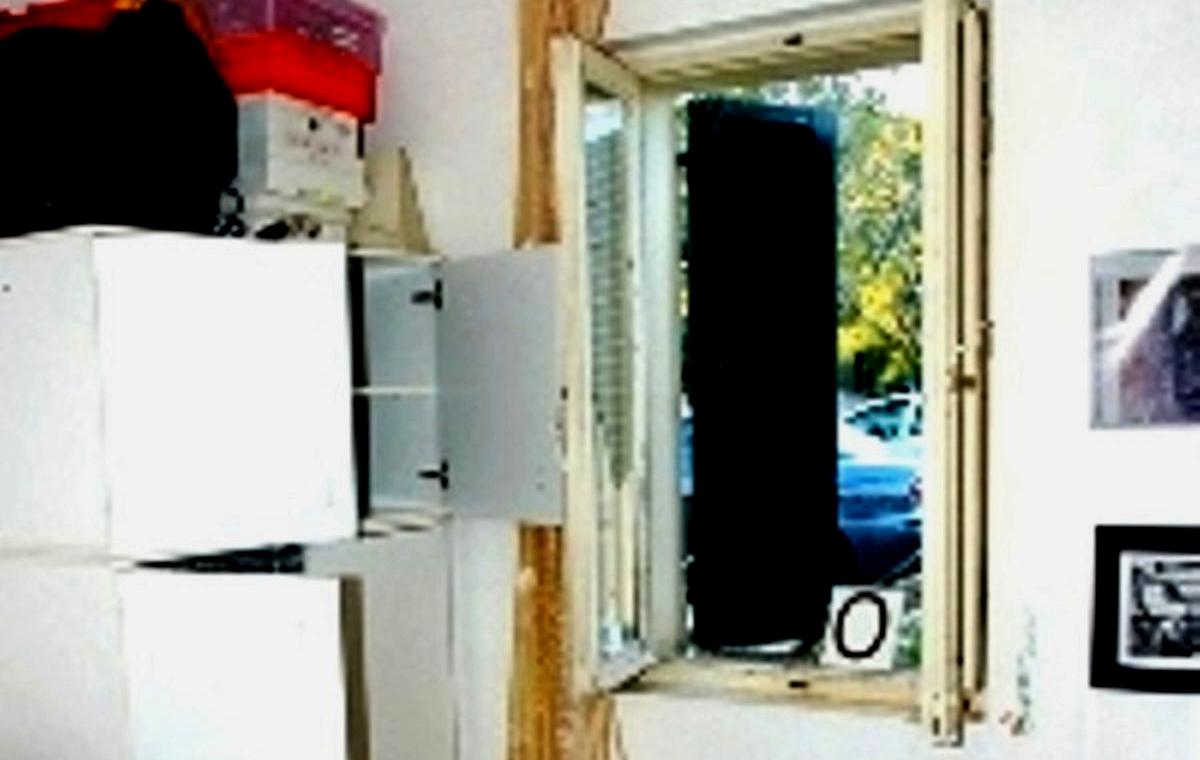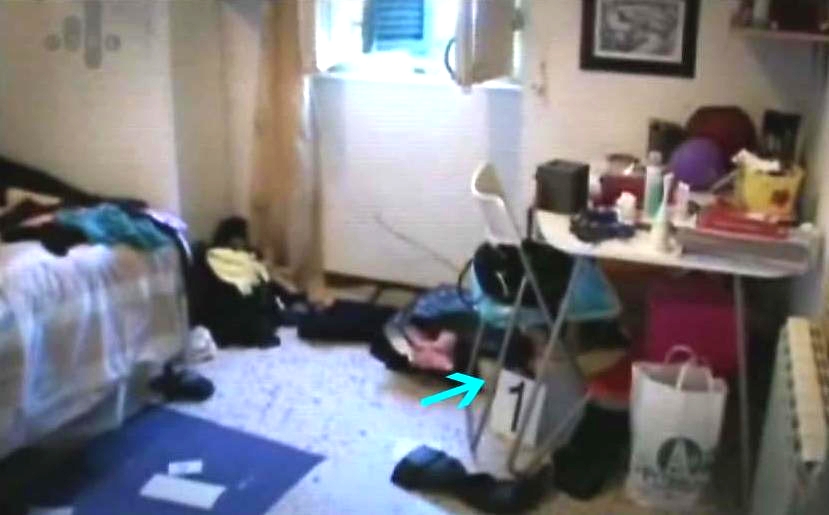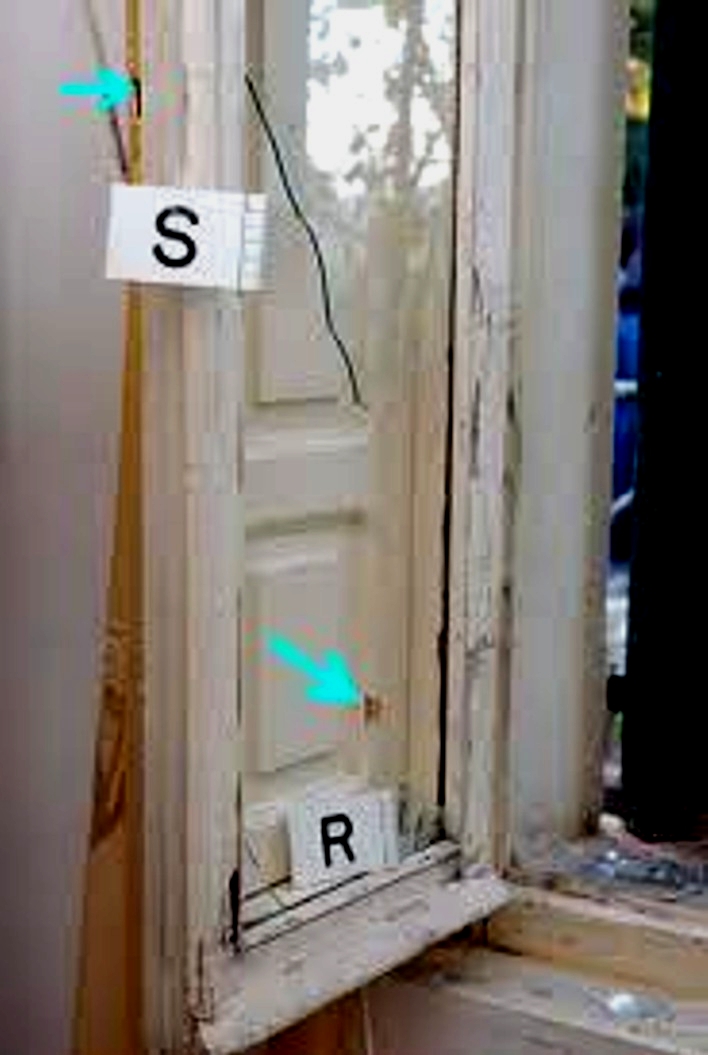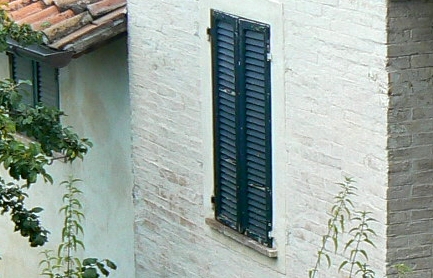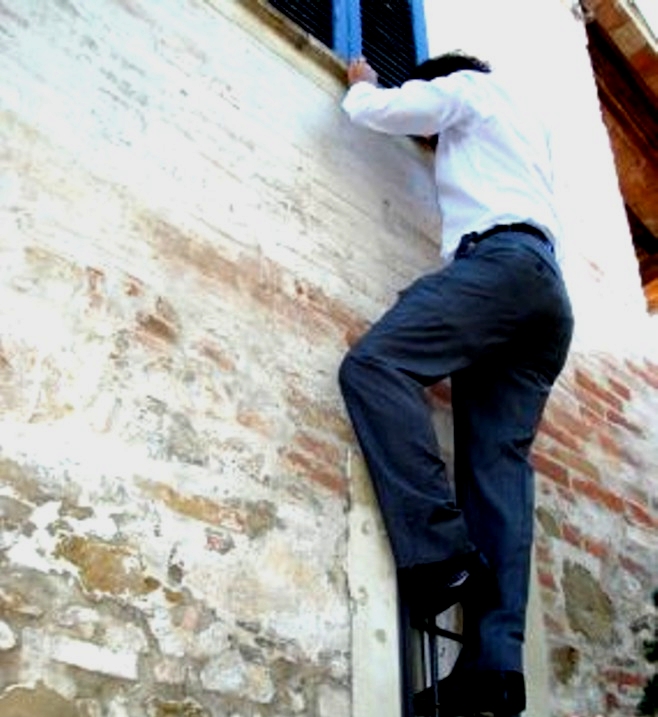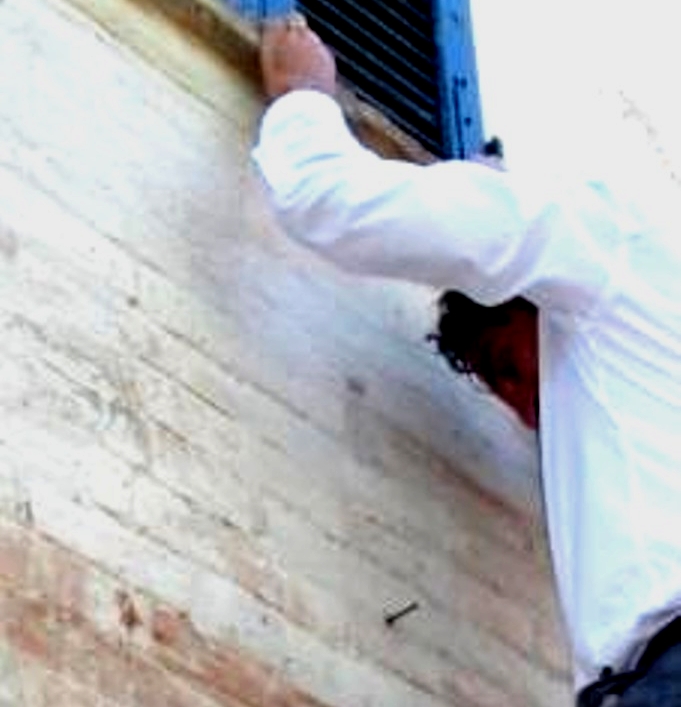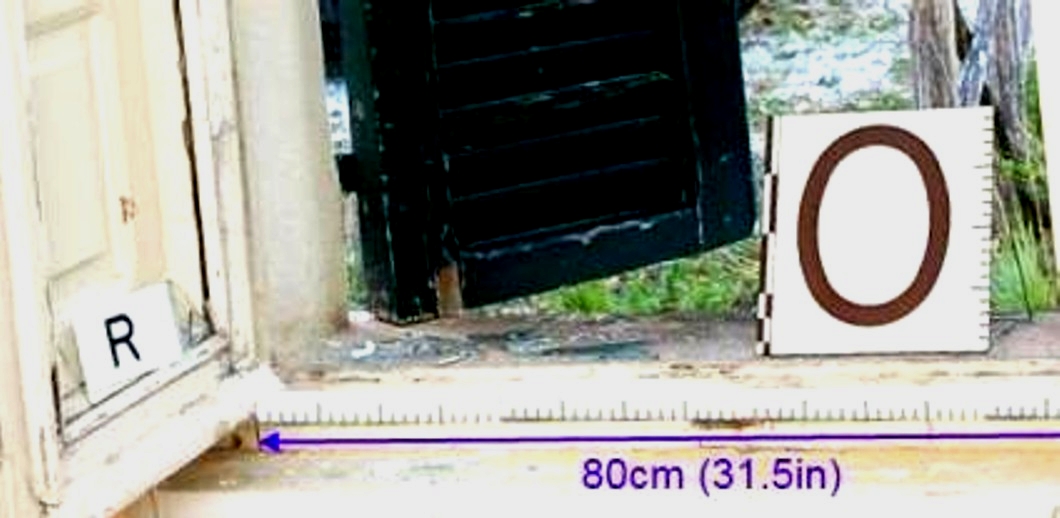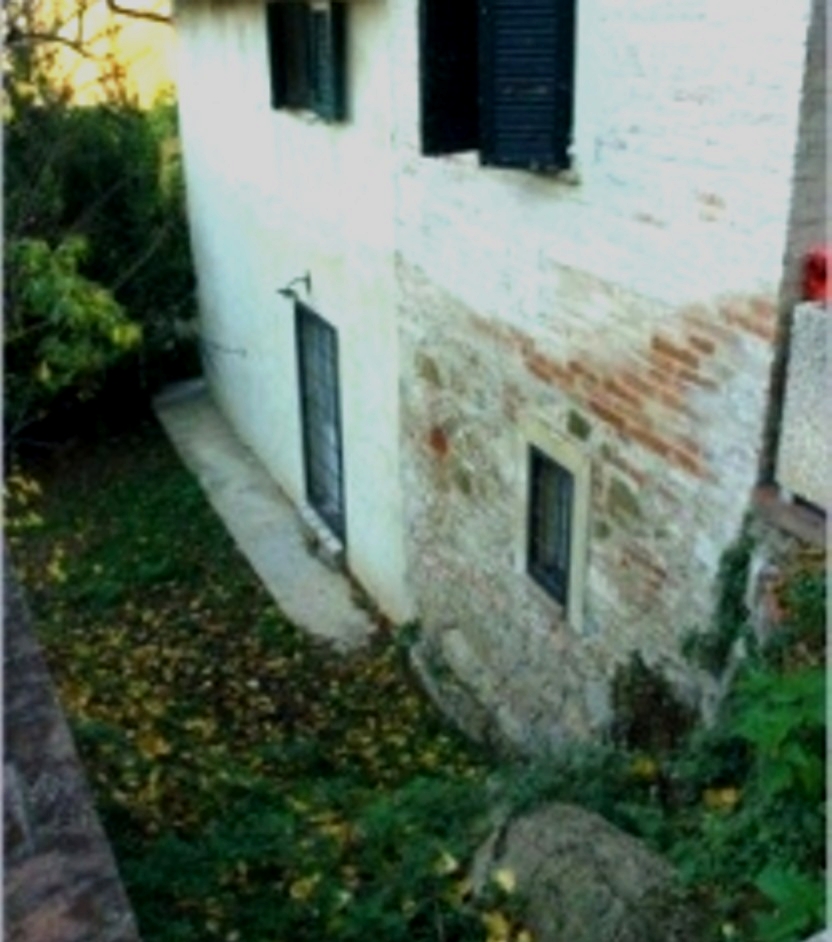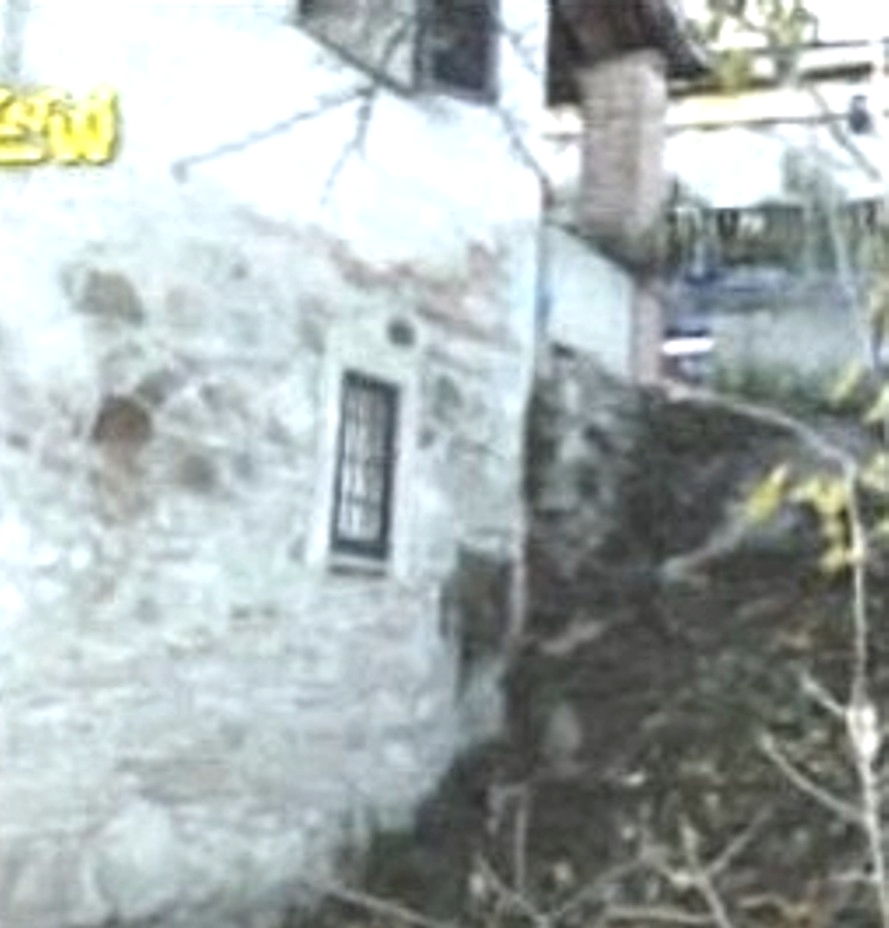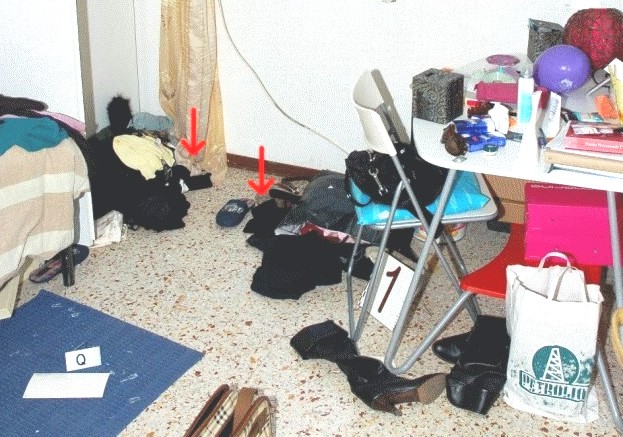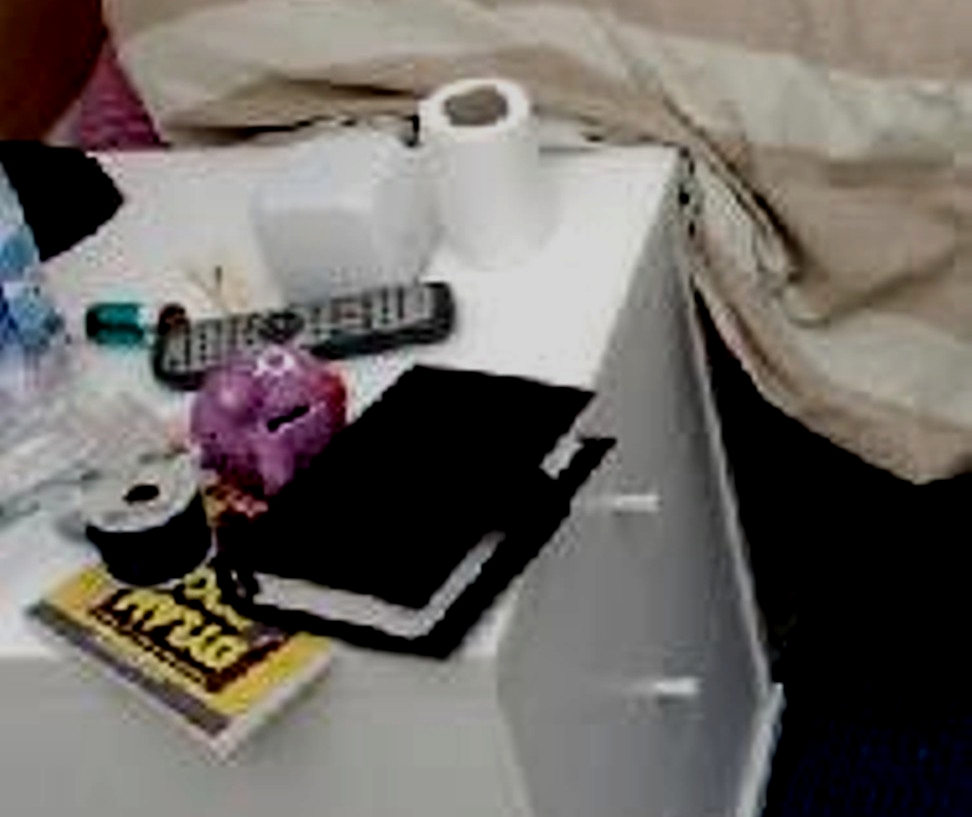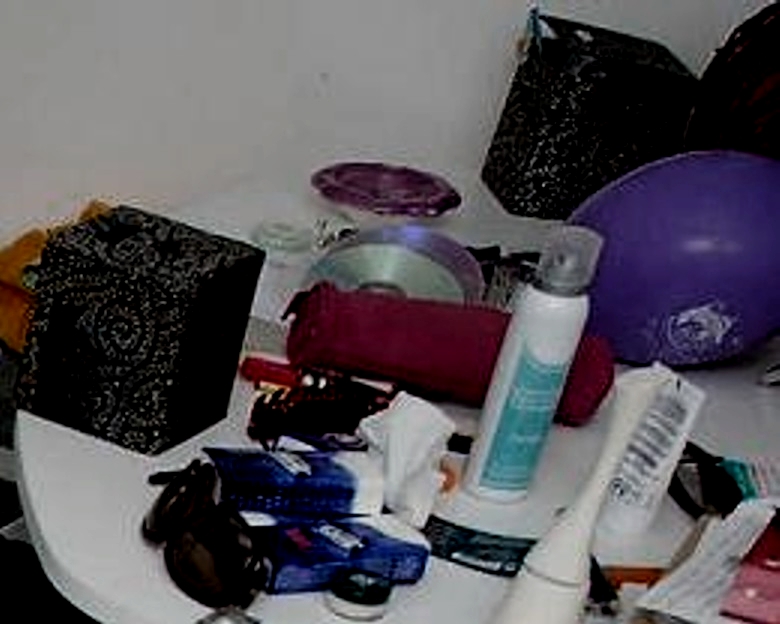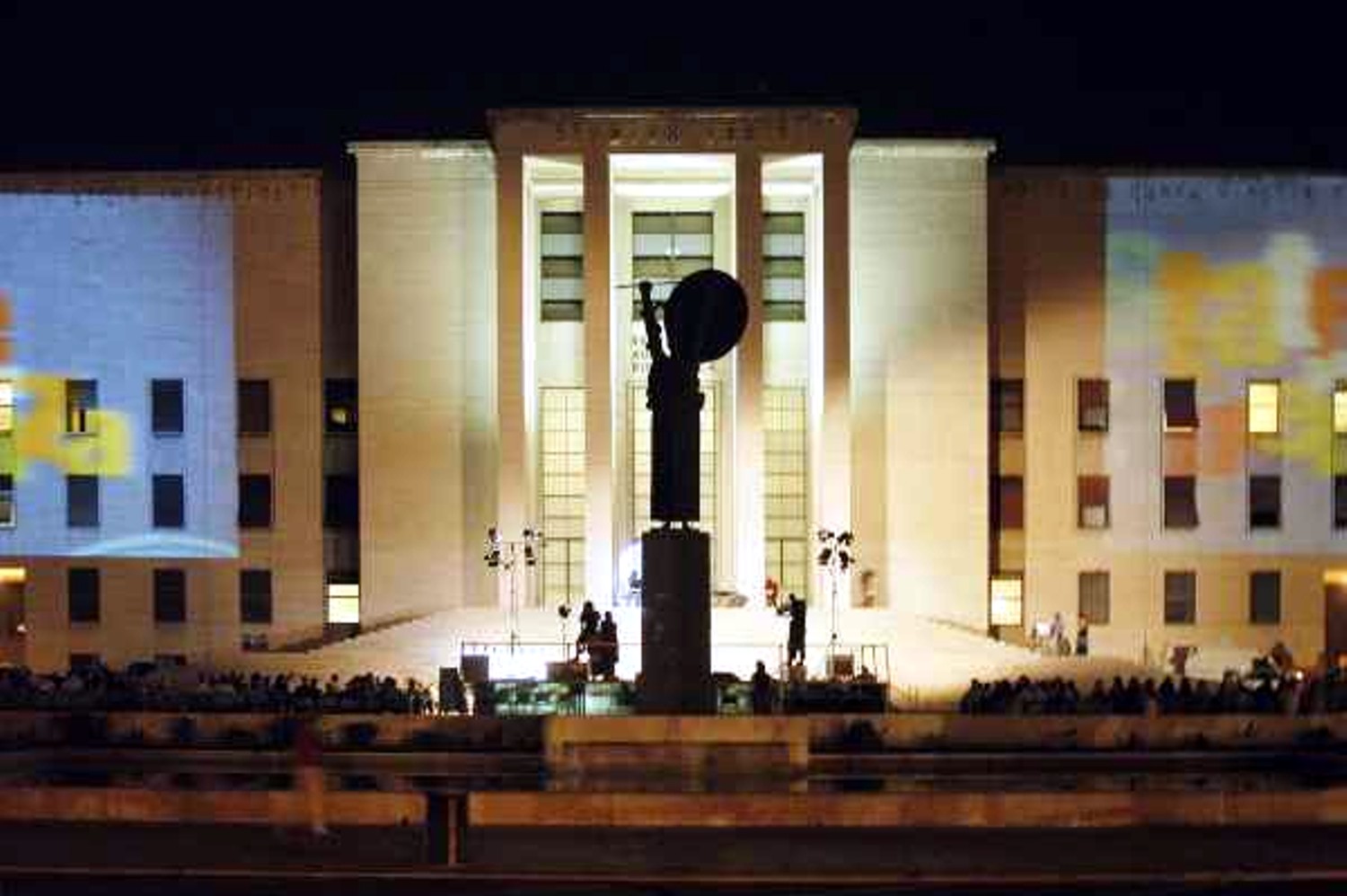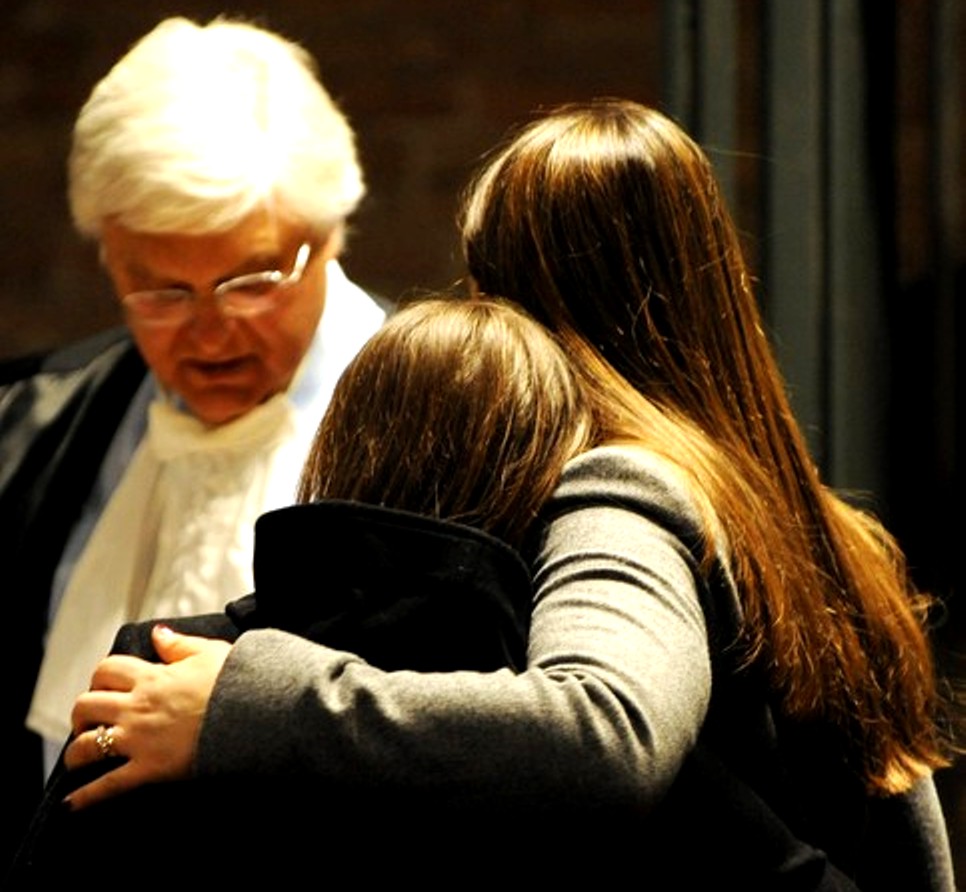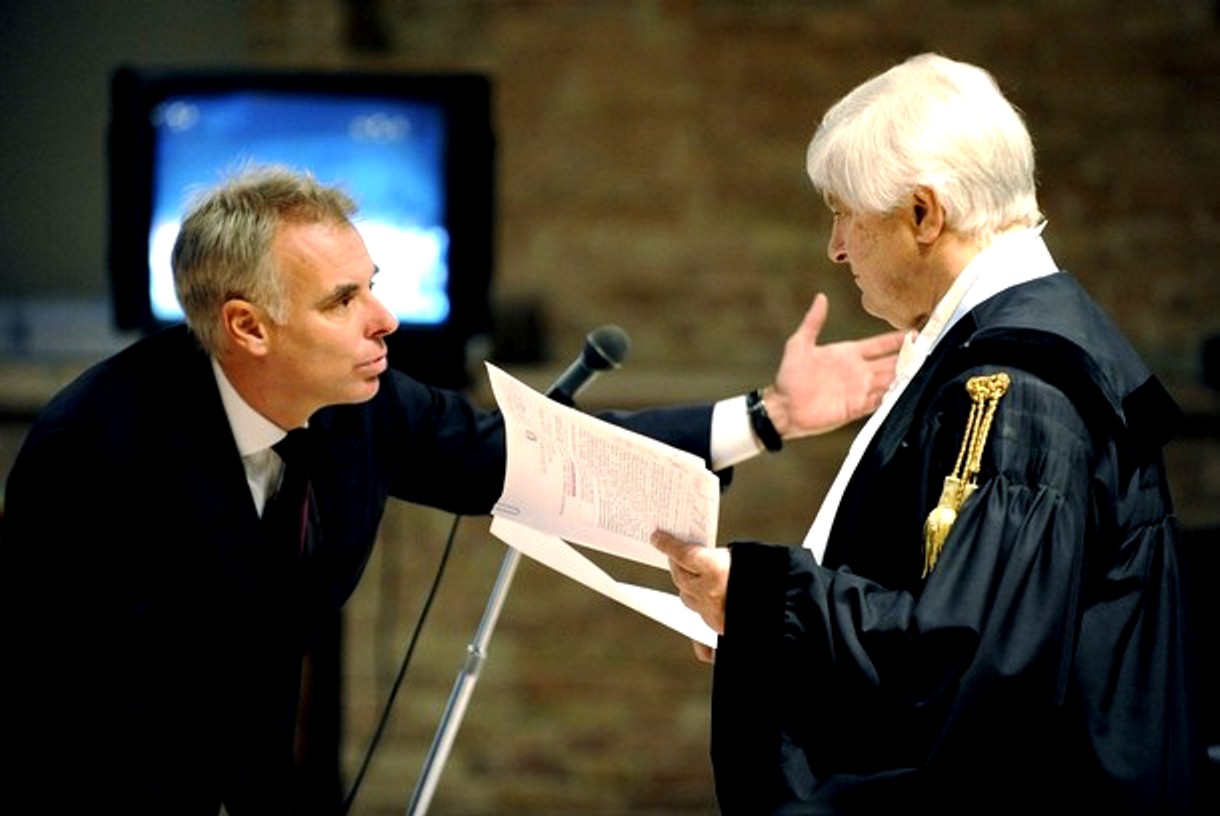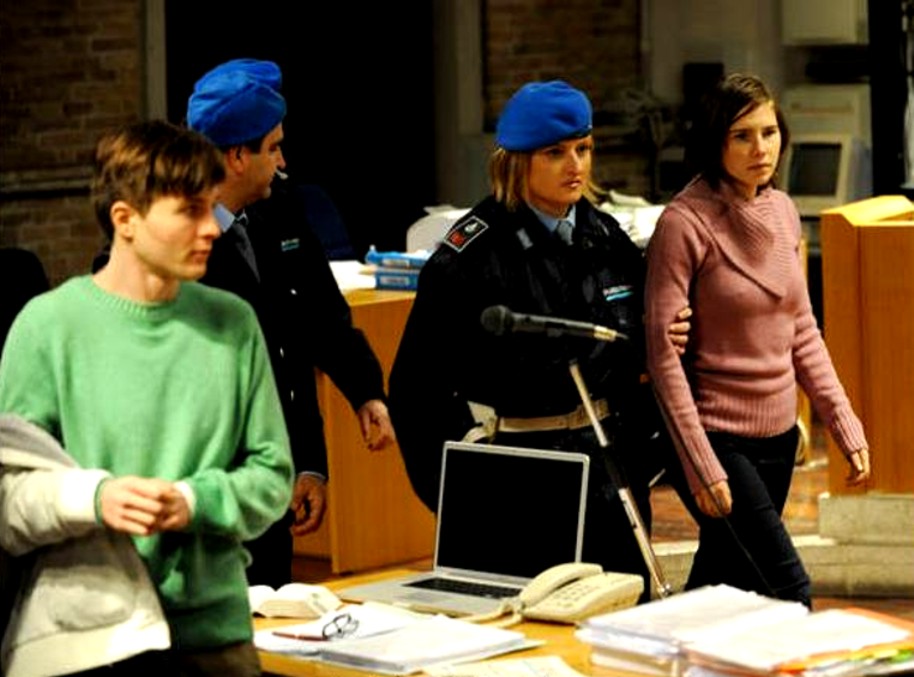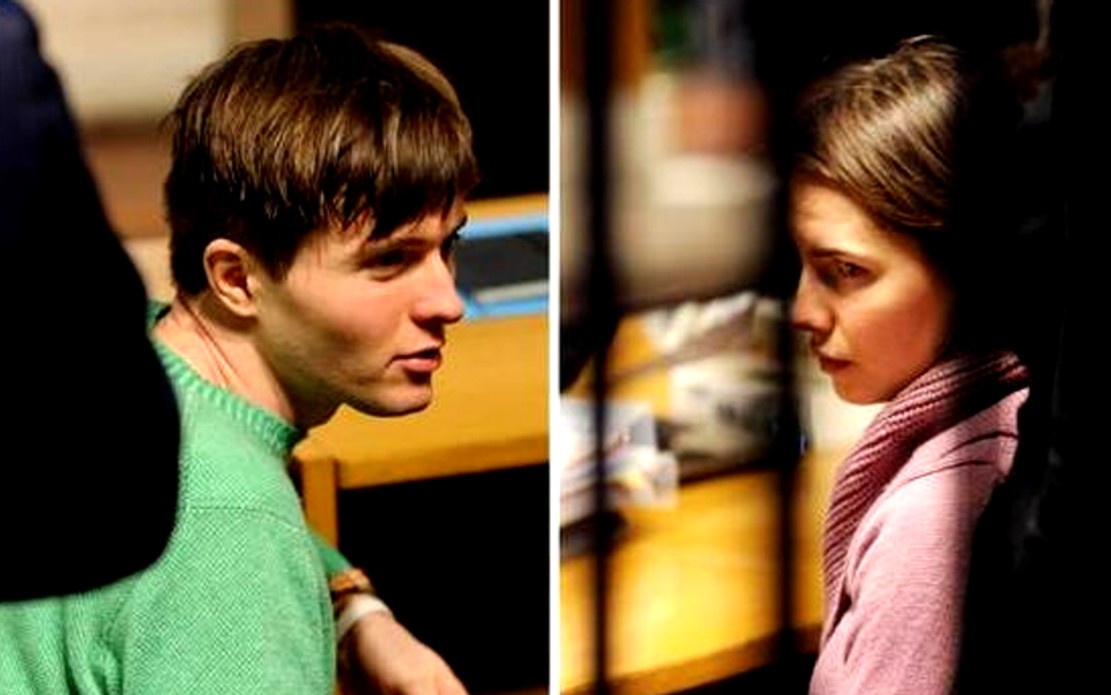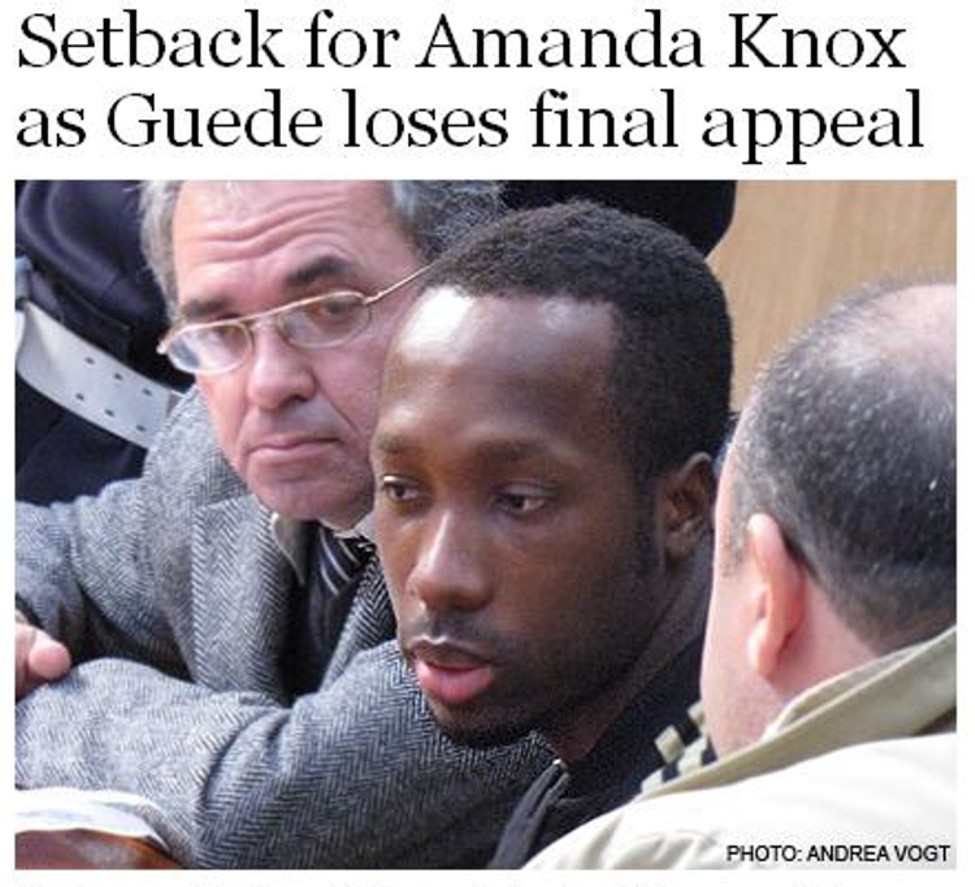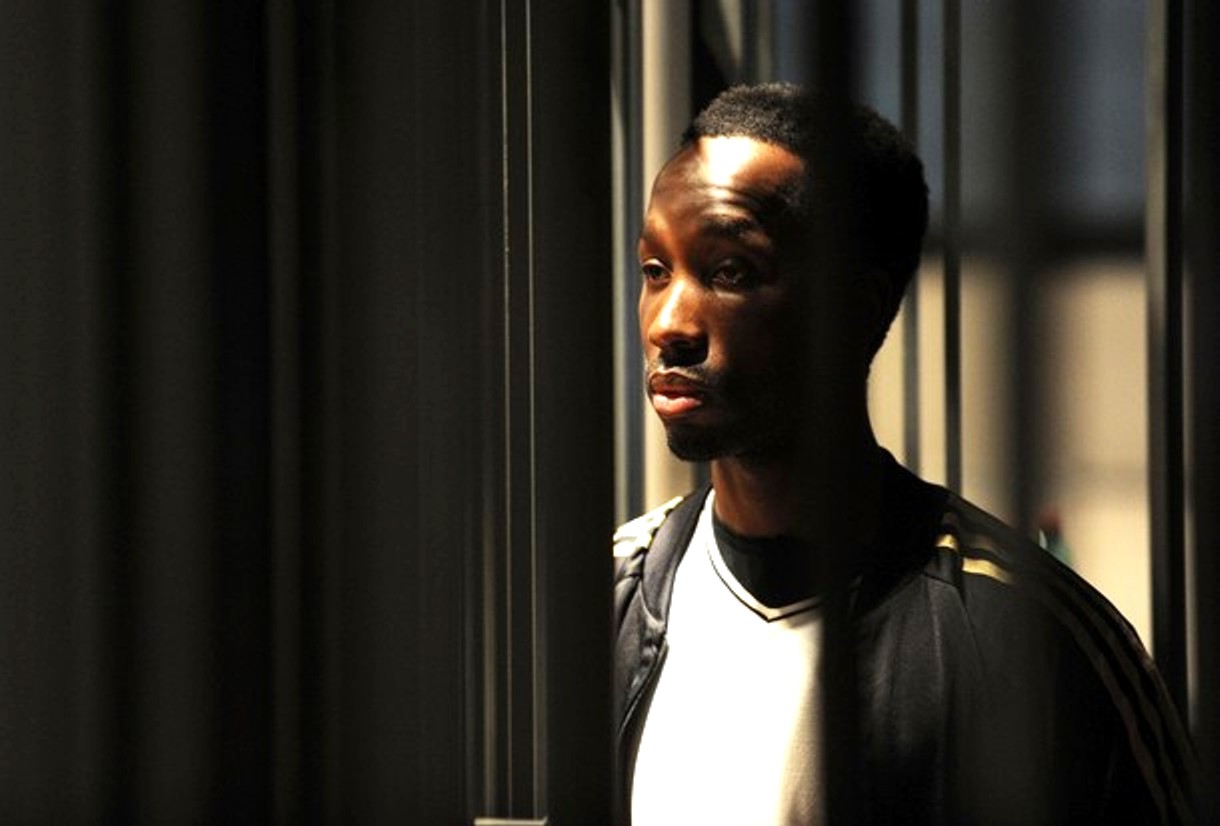
Category: Trials 2008 & 2009
Tuesday, February 01, 2011
Explaining The Massei Report: A Visual Guide To The Faked Break-In Via Filomena’s Window
Posted by pat az
1. Post Overview
Cross-posted from my own website on Meredith’s case at the kind invitation of TJMK.
The Massei Report on the trial and sentencing of Amanda Knox and Raffaele Sollecito looks into whether or not a break-in is supported by the evidence available in the room with the broken window.
It concludes that the broken window and room in disarray - Filomena’s bedroom - are an “artificial representation”, ie. that the break-in was faked. After seven pages of review of the evidence, the Massei Report states:
“the situation of disorder in Romanelli’s room and the breaking of the window pane constitute an artificial representation created in order to orient the investigations towards a person who, not having the key to the front door, was supposed to have entered through the previously broken window and then effected the violent acts on Meredith which caused her death.
What follows is a look at the comments in the Massei report compared with crime scene and other photos. All quotes are from the English translation prepared by unpaid volunteers at PerugiaMurderFile.org. The section on the scenes in the bedroom begins on page 47 and continues to page 55. Some sentences in the paragraphs below have been omitted for brevity, and can be read in full in the original.
2. Knox Finds The Scene
Then (Amanda) went into another room and noticed that the window had been broken and that there was glass inside. She told these things to her and the other girls present. Then she related that she had gone back to Raffaele’s house and had rung Filomena.
I)n one of the telephone calls to Romanelli, Amanda spoke of that smashed window and of the possibility that someone could have entered the house through the broken place; she said this also in the telephone call to 112 and in the first declarations to the Postal Police.
Also in the e-mail of November 4, 2007, sent by Amanda to 25 people in the US, she hypothesises that a burglar could have entered the house and says she looked around to see if anything was missing.
Filomena Romanelli, disturbed by this phone call, had rung Amanda back without receiving a reply and when, a little later, she had succeeded in speaking to Amanda, Amanda had told her that in her room (i.e., in Ms. Romanelli’s room) the windowpane was broken, everything was in a mess, and that she should come back home.
Filomena Romanelli had ascertained from a quick check of her room, even though (it was) in a complete mess with the windowpane broken, that nothing was missing.
It must be held that when Filomena Romanelli left the house in via della Pergola, she had pulled the [interior] shutters towards the interior of her room, although she did not think that she had actually closed them; furthermore, because they were old and the wood had swelled a bit, they rubbed on the windowsill; to pull them towards the room it was necessary to use some force (“they rubbed on the windowsill”); but in this way, once they had been pulled in, as Romanelli remembered doing, they remained well closed by the pressure of the swelled wood against the windowsill.
It cannot be assumed - as the Defence Consultant did - that the [interior] shutters were left completely open, since this contradicts the declarations of Romanelli, which appear to be detailed and entirely likely, considering that she was actually leaving for the holiday and had some things of value in her room; already she did not feel quite safe because window-frames were in wood without any grille.
Also, the circumstance of the [interior] shutters being wide open does not correspond to their position when they were found and described by witnesses on November 2, and photographed (cf. photo 11 already mentioned).
Now, for a rock to have been able to break the glass of the window without shattering the outside shutters, it would have been necessary to remove the obstacle of the shutters by opening them up.
Consequently, since the shutters had been pulled together and their rubbing put pressure on the windowsill on which they rested, it would have first been necessary to effect an operation with the specific goal of completely opening these shutters.
The failure to find any instrument suitable for making such an opening (one cannot even see what type of instrument could be used to this end) leads one to assume that the wall would have to have been scaled a first time in order to effect the complete opening of the shutters, in order to enable the burglar to aim at the window and smash it by throwing a large stone - the one found in Romanelli’s room.
He would then have to have returned underneath Romanelli’s window for the second climb, and through the broken glass, open the window (balanced on his knees or feet on the outside part of the windowsill), otherwise he would not have been able to pass his arm through the hole in the glass made by the stone) and reach up to the latch that fastened the window casements, necessarily latched since otherwise, if the casements had not been latched, it would not have been necessary to throw a rock at all, but just to open the shutters and climb inside.
The “climber” would also need to rely on the fact that the [interior] shutters were not actually latched, and also that the “scuri” ]blackout blind] had not been fastened to the window-frame to which the broken pane was attached; otherwise it would not have been possible to open them from the outside; nor would it have been possible, even breaking the glass, to make a hole giving access to the house, since if these inner panels had been closed, they would have continued to provide an adequate obstacle to the possibility of opening the window, in spite of the broken pane.
This scenario appears totally unlikely, given the effort involved (going twice underneath the window, going up to throw the stone, scaling the wall twice) and taking into account the uncertainty of success (having to count on the two favourable circumstances indicated above), with a repetition of movements and behaviours, all of which could easily be seen by anyone who happened to be passing by on the street or actually coming into the house.
But beyond these considerations, there are other elements which tend to exclude the possibility that a burglar could have entered the house through the window of Romanelli’s room.The double climb necessary to attain the height of three and a half metres would have left some kind of trace or imprint on the wall, especially on the points on the wall that the “climber” would have used to support his feet, all the more as both the witnesses Romanelli and Marco Zaroli gave statements indicating that the earth, on that early November evening, must have been very wet (..6) (p50)
In fact, there are no visible signs on the wall, and furthermore, it can be observed that the nail ““ this was noted by this Court of Assizes during the inspection ““ remained where it was: it seems very unlikely that the climber, given the position of that nail and its characteristics, visible in the photo 11, did not somehow “encounter” that nail and force it, inadvertently or by using it as a foothold, causing it to fall or at least bend it. (p50)
The next fact to consider is that the pieces of glass from the broken pane were distributed in a homogeneous manner on the inside and outside parts of the windowsill, without any displacement being noted or any piece of glass being found on the ground underneath the window.
This circumstance, as confirmed also by the consultant Pasquali, tends to exclude the possibility that the rock was thrown from outside the house to create access to the house through the window after the breaking of the pane. The climber, in leaning his hands and then his feet or knees on the windowsill, would have caused at least some piece of glass to fall, or at least would have been obliged to shift some pieces of glass in order to avoid being wounded by them.
Instead, no piece of glass was found under the window, and no sign of any wound was seen on the pieces of glass found in Romanelli’s room. It can moreover be observed that the presence of many pieces of glass on the outside part of the windowsill increases the probability of finding some small pieces of glass on the ground underneath, since there seems to be no reason that so many pieces of glass would all stop just at the edge of the windowsill without any of them flying beyond the edge and falling down to the garden below. (p51 & 52)
On this subject it is also useful to recall that at the hearing of April 23, 2009, the witness Gioia Brocci mentioned above declared that she had observed the exterior of the house, paying particular attention to the wall underneath the window with the broken pane, the window of the room then occupied by Filomena Romanelli.
She said: “We observed both the wall”¦underneath the window and all of the vegetation underneath the window, and we noted that there were no traces on the wall, no traces of earth, of grass, nothing, no streaks, nothing at all, and none [39] of the vegetation underneath the window appeared to have been trampled; nothing” (p. 142 declarations of Gioia Brocci). (51)
This situation, like all the other glaring inconsistencies, is adequately and satisfactorily explained if one supposes that the rock was thrown from the inside of the room, with the two shutters pulled inwards so that they blocked the pieces of glass from falling to the ground below. Once the glass had been broken from inside, the rock was set down at some place in the room, and the shutters were pushed towards the outside, being thus opened from within the room. (p51)
But the fact that all this was in fact just a simulation, a staging, can be deduced from further circumstances. From the photos taken by the personnel of the Questura (photos 47 to 54 and 65 to 66) one can perceive an activity which appears to have been performed with the goal of creating a situation of obvious disorder in Romanelli’s room, but does not appear to be the result of actual ransacking, true searching for the kind of valuable objects that might tempt a burglar.
The drawers of the little dresser next to the bed were not even opened (photo 51 and declarations of Battistelli who noted that Romanelli was the one who opened the drawers, having found them closed and with no sign of having been rifled: see p. 66 of Battistelli’s declarations, hearing of Feb. 6, 2009).
The objects on the shelves in photo 52 appear not to have been touched at all; piles of clothes seem to have been thrown down from the closet (photo 54) but it does not seem that there was any serious search in the closet, in which some clothes and some boxes remained in place without showing any signs of an actual search for valuable items that might have been there (photo 54).
It does not appear that the boxes on the table were opened (photo 65) in a search for valuable items. And indeed, no valuable item (cf. declarations of Romanelli) was taken, or even set aside to be taken, by the ““ at this point we can say phantom ““ burglar.
What has been explained up to now thus leads to the assertion that the situation of disorder in Romanelli’s room and the breaking of the window pane constitute an artificial representation created in order to orient the investigations towards a person who, not having the key to the front door, was supposed to have entered through the previously broken window and then effected the violent acts on Meredith which caused her death.
Footnotes
(...1) The Massei Report in English is readable and downloadable via the link at the top of this page.
(..2) The consultant for the defence actually assumed that this had been done; in his exhibit, he assumed that the shutters were not present in front of the window
(..3): “if the shutters were closed, he could not have passed through, that is obvious”, cf. declarations of the consultant for the defence, Sergeant Francesco Pasquali, p. 22 hearing July 3, 2009.
(..4): (the window in Romanelli’s room is located at a height of more than three and a half metres from the ground underneath, cf. photo 11 from the relevant dossier)
(..5):,which are the wooden panels [scuri=non-louvered shutters in interior of room] that usually constitute the outer side (or the inner, depending on the point of view) of the window [attached to the outer edge of the inner side of the window-frame]
Saturday, January 22, 2011
Fourth Appeal Hearing: Updates On Today’s Court Hearing Which Is Mainly Procedural
Posted by Peter Quennell
Above: Sapienza University is the largest European university and the oldest of Rome’s three state-funded universities.
- At noon Italian time ANSA reported that the two DNA experts from Sapienza University have been given 90 days to do their retesting. They will begin their review on Feb. 9, conclude by May 9 and report their findings to the court on May 21.
- The witness in the square on the night who said he saw Sollecito and Knox, Antonio Curatolo, will be re-examined. This is at the prosecution’s request, not at the defenses’.
- The DNA experts have asked to break open the handle of the knife they are asked to retest. If Meredith’s blood is found to have seeped into the handle, by itself that will be case closed and verdict confirmed. Decision on hold.
- The examinations will be carried out in the presence of representatives of all parties. Among them will be Dr. Patrizia Stefanoni, the technical director of the forensic laboratory that conducted the original DNA investigations.
- The prosecution requested Rudy Guede as a witness and that too was put on hold. Yet another shot across the bows of the defense. If Alessi or Aviello are put on the stand then Guede will also be there to heatedly rebut them.
- The next appeal hearings scheduled by the court of appeal have been set for 12 and 26 March, and April 16 and May 21. May 21 is when the DNA experts will report back so just three days for examination of witnesses.
Judge Hellman is allowing no defense fishing expeditions, and he is giving the prosecution full latitude. Good reason for Giulia Boingiorno not to be in court: her baby was delivered today in Rome. We like her and wish her and the baby well.
Below, images of the two court-appointed DNA experts and of Amanda Knox. The Reuters caption says her lawyers are consoling her. Chris Mellas’s remarks later made it sound like the family is already trying to let her down gently.
.
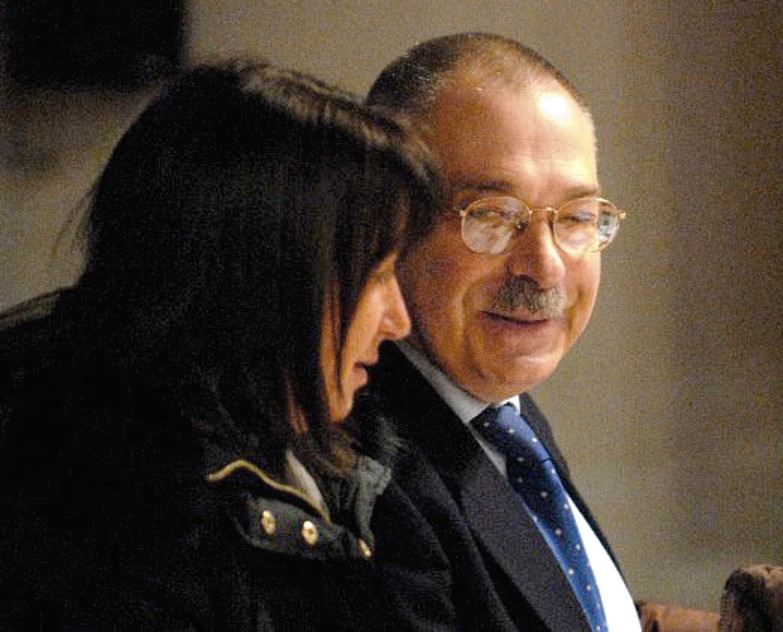
The Fourth Appeal Hearing Today Saturday: The Main Items On The Court’s Agenda
Posted by Peter Quennell
Not very much drama is expected. This hearing is mainly organizational.
The mood of the defense lawyers will be interesting to watch. Also whether Sollecito lawyer Giulia Bongiorno is a show or a no-show. And we may find out if the possible defense witnesses Mario Alessi and Luciano Aviello will actually testify.
Two DNA experts nominated by Judge Hellman at the last appeal hearing on 11 December for the genetics testing of the bra clasp and the knife will appear and be sworn in and charged with their assignment.
Stefano Conti and Carla Vecchiotti of La Sapienza University in Rome will be asked how long they believe they will need and it is expected that they will ask for two to three months.
And the court will establish a timetable for the testimony of several new defense witnesses who may challenge one or two components of Antonio Curatolo’s statement. Nick Pisa bizarrely mis-reports on this in the Daily Telegraph:
He had told the court he remembered the night “clearly” as he saw student revellers queuing up to catch buses to nightclubs on the outskirts of the city.
However defence lawyers have established that he could not have seen the students, as the night Meredith was murdered was a bank holiday with venues being shut and no buses running.
Have established that he could not have seen the students? Really? There were other buses than the disco buses running that night. Students were definitely around.
If prisoners Mario Alessi or Luciano Aviello are indeed put on the firm list to testify that’ll be a pretty sure sign that the defenses are really clutching at straws, as in each case their known claims are contradicted by dozens of evidence points .
The prosecution has interviewed both of them and those interviews have not been made public. Here are more wrong and seemingly irrelevant claims bizarrely reported by Nick Pisa.
Retired British university professor David Anderson, who lives near Perugia and who has taken an interest in the case, said: “The conviction of Amanda and Raffaele is scandalous as neither has the psychological profile of a killer.
“The investigation was flawed from the beginning with many mistakes being made and there is no DNA, no real motive, no weapon and no credible witnesses at all.”
Wednesday, December 22, 2010
The El Bizarro Defense: “It’s Unfair To Use The DNA They Didn’t Manage To Scrub Away Against Them”
Posted by Cardiol MD
Remember the twins who appealed for mercy at their trial for murdering their parents? On the grounds that they are now orphans?
There is something of that reminiscent here. The defenses of Knox and Sollecito seem to be trying to exclude evidence that they themselves tried to destroy, essentially on the grounds that their destructive attempts failed to destroy all of it, and left behind only some of it.
Their argument boils down to whether the disputed DNA evidence is more unfairly prejudicial than probative. The faux forensic experts who are arguing in the media that this disputed DNA evidence would not ever be admitted in US or UK courts are in fact totally mistaken.
It is my opinion that because it was the defendants’ deliberate conduct that nearly succeeded in extinguishing all their DNA, any US and UK courts would insist to admit this highly relevant evidence, and let the participants duke out its fairness, in open court, in front of a jury.
That is what the only relevant court in Meredith’s case, the Perugia appeals court, is now doing.
DNA evidence may be “only circumstantial” but that is as with most of the evidence in this case. Meredith was murdered - that’s a fact - but no one saw who did it except the killers.
Judge Hellman designated his selected Expert Reviewers with such alacrity that I think he had already thought it all out. Judge Hellman is being prudently responsive to the legal and political pressures bearing down on him, and knows the ruling also calls the defendants’ bluff.
As Tom in the post below and others are pointing out, the review is limited to a very partial review of the DNA evidence, and what is not to be reviewed is by far the most significant.
The possibility of more residual blood at the blade/handle junction is thought-provoking. Sollecito’s obsession with knife-ownership suggests that his knife, the murder-weapon, would be top quality, probably with a handle/blade junction, pretty, but vulnerable to seepage into it.
Also, the knife-wielders significantly, even deliberately, stayed away from the well-known neck-blood-vessels, the Jugular Veins, and the Carotid Arteries, on both sides, focusing their neck-stabs on the area of the Larynx, as if they had some medical knowledge of what they were doing - but not enough.
The blood-vessel they did cut - the right superior thyroid artery - is a branch-of-a-branch of the better known blood vessels, but very close to the larynx. They didn’t know, or care, enough to anticipate the lethal consequences of cutting so small an artery in that particular location, so near to the airways.
I agree with others that Judge Hellman may also be innoculating himself by heading off a possible adverse ruling of the Supreme Court in Rome, which must be restricted to Procedural/Legal issues.
The defence lawyers sem to be submitting, probably against their own better judgement and advice, to the FOA camp’s insistence for additional review. I also believe the defendants will bitterly regret this insistence.
Saturday, December 18, 2010
First Reports On Scope Of Appeal Sounds Like Maybe A Setback For The Defenses
Posted by Peter Quennell
The first full reports are not out yet. This is a first quick take on the Italian reporting and may be subject to correction.
Some of the Cassation’s hard-line decision for rejecting Rudy Guede ‘s 10 appeal grounds in Rome on thursday will indeed be accepted into this appeal for the judges’ consideration.
The judges are agreeing to the defense request for a review of the testing of the DNA on the bra clasp and the large knife, though of course nobody - nobody - so far has ever proved contamination as the prosecutors today pointed out.
Two Rome experts in DNA have already been nominated.
Apparently none of the other very extensive forensic evidence at the scene of the crime - which is the entire apartment, not merely Meredith’s bedroom - is to be retested. That has always been very tough to explain away.
Apparently only one or two of the previous witnesses whose testimony is described in the Massei report will be heard from again. Possible Guede confidant Alessi will be allowed and maybe Aviello who claimed his missing brother really did it.
And apparently ninety days is added to the allowed duration of this appeal, because the Massei Report took 90 days to produce. The deadline now is next September, although if it lasts through to the spring we will be surprised.
The defense doesn’t seem to have many strong hopes going forward. No more Spiderman attempts on Filomena’s window. They found no room for appeal with regard to the various contradictory alibis, the various peculiar phone calls, and assorted bizarre behaviors.
Remember that even Knox and Sollecito themselves have claimed they were zonked out of their skulls on the night - though magically they seem to have managed a major cleanup and rearrangement of the entire crime scene, minus evidence pointing to Guede.
The astute commenter Piktor posted this on PMF
The expert review would be needed if the scientific results were the only evidence that convicts.
What if the DNA evidence was thrown out. Could you convict without it?
You have the staging, the lies, the false accusation, the police testimony, the defendant’s multiple alibis that don’t mesh, Mrs. Mellas testimony in court exposing Knox’s willful “confusion”, the email and diaries.
You add it up and it all points in one direction. No doubt about the result.
The prosecution narrative makes sense. The defence has no narrative.
UK’s Sky News Carries A Pre-Session Report from Nick Pisa In Perugia This Morning
Posted by Peter Quennell
Courtroom images are from the session last Saturday.
The Appeal’s Set Limits: What The Judges Allowed Today And Didn’t Might Tell Us A Lot
Posted by TomM
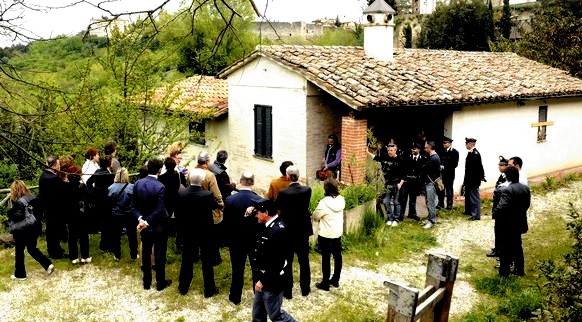
[Massei court deciding whether to buy spiderman theory; they didn’t]
1. The Context Of These Remarks
The judge ruled on the appeal’s inclusions and exclusions today. I’ll summarise what they are and how American courts might have differed.
I really do not understand why the defense and the family are so happy with this review, which is very limited and not complete in any sense - other than, perhaps, the “any port in a storm” phenomenon.
From my view in the bleachers, there are way more risks to the defense than to the prosecution from Saturday’s rulings.
2. What’s Allowed In Italian Appeals V. American
As a California lawyer familiar with trials and appeals in my state, watching the Meredith Kercher murder trial wind its way through the Italian legal system has been a learning experience.
It is a system with more protections than the one I know first-hand. The case is now in its first appeal phase, and proceeds far differently from the way it would in the US.
- If Knox and Sollecito had been convicted in an American court (which an American court would have had no difficulty in doing) less helpful presumptions would be applied to their appeal.
- In Italy they are convicted, and for that reason they are imprisoned and the visitation privileges they had before the jury’s verdict have been reduced. But for purposes of weighing the evidence in the appeal, they are presumed innocent.
- In the US, the court of appeal would not presume them innocent or guilty; it would regard them as having been adjudged guilty.
- In Italy, they can ask for the court of appeal to hear testimony from new witnesses and seek to introduce additional evidence.
- In the US, the appeal would be on the basis of the clerk’s and reporter’s transcripts of the trial. In the US the jury at the original trial would have been instructed that if an item of evidence can be interpreted two ways, one favoring guilt and one favoring innocence, they should accept the interpretation that favors innocence. But not so on appeal; the court of appeal would interpret all the inferences from the evidence in the light most favorable to the prosecution.
- An American court of appeal would not consider an attack on the credibility of a witness unless the testimony was such that no reasonable person would believe the testimony.Thus, an attack on the testimony of Curatolo would have no chance of success on appeal. In fact, jury instruction in the US would give the jury blessing to believe him even absent disco buses running that fatal night.
From a form jury instruction on how to judge witness credibility:
“Do not automatically reject testimony just because of inconsistencies or conflicts. Consider whether the differences are important or not. People sometimes honestly forget things or make mistakes about what they remember. Also, two people may witness the same event yet see or hear it differently.”
The Italian appeal is described as a “trial de novo”.
- In common law jurisprudence, a trial de novo is simply a new trial, and the jury in a new trial would not even be told of the existence of the first trial. It would be done as if the first trial never happened.
- Not so in Italy. The jury and lay judges have full access to the case dossier, the Massei Motivazione, and the briefs of the parties. They decide which parts of the case should receive new evidence, and the parts where none is needed. If that were not the case, they would not know how to respond to the defense requests.
3. Tellingly, What Court Has NOT Re-opened
1. Staging Of Burglary
It is significant that there is no re-visit on the staging of the burglary. This charge is not just one of the things used to prove the murder, it is also a separate charge which does not require that a person also have participated in the murder.
Let’s suspend disbelief a moment. Suppose AK and RS had not been present during the murder, having ducked out briefly to get more drugs, but returned to discover Meredith’s body.
Suppose they thought they would be suspects because they had let Rudy in and feared they would be blamed, so they staged the burglary to divert suspicion from themselves. In this hypothetical situation, they are still guilty of staging a burglary even if they didn’t otherwise participate in the crime.
So, what to make out of the fact that no further evaluation will be made of the staging?
This seems like the easiest of the charges to prove and the most difficult to defend. Staging is a recognized phenomenon in criminal investigations and the defense expert did not fare well under cross-examination. I don’t see how the court would reverse the judgment on this issue given the state of the record.
2. Collection Of DNA
Defense criticized the way the dna was collected from the bidet, but there will be no review of that evidence - or of any other of the mixed blood/dna evidence - only the knife and the bra clasp.
If the appellate jurors’ inclination were to think there is reasonable doubt on the dna, there is plenty of defense expert testimony to hang that hat on. That only two of the exhibits will be studied shows that they do not question the work of the scientific police as a whole.
4. The Pattern Of Sorts In These Rulings
From my own experience, I firmly believe that Hellman has not made up his mind on the final outcome. That doesn’t mean he doesn’t know what he thinks the jury will do with the case.
He clearly knows the case, and I think he knows if there are areas in Massei’s reasoning that have vulnerabilities (not necessarily fatal) that could attract attention in the Court of Cassation.
I think he knows whether the prosecution’s case is a house of cards, or if it is a good case with some curable cosmetic flaws.
To me, the rulings look like the judge has reviewed the case, thinks it is fundamentally sound, and believes it will be backed up by unbiased expert opinion - and if it doesn’t, he will assess what impact that has on the case.
The issue with respect to the scientific police is not that they were biased in the sense of falsifying evidence to wrongfully convict, but that the video of the crime scene investigation showed non-textbook acts, Stefanoni didn’t leave a complete paper trail in testing the knife, and they failed to collect and correctly bag the bra clasp at the beginning.
All of which left an opening for the defense to claim the dna evidence is suspect. There is a reason why teachers don’t let students grade their own papers, I think that concept is behind Hellman’s decision to seek an unbiased review of these two items.
5. No Signs Of Exoneration In Rulings
If Rudy Guede testifies and gives a believable narrative, it may not matter what the two dna reviews say, and it might also undermine the jurors’ inclination to accept the theory of remorse from the covering with the quilt that persuaded Massei to reduce the sentence.
An increased sentence is not out of the question.
As I said at the top, I really do not understand why the defense and the family are so happy with this review, which is very limited and not complete in any sense - other than, perhaps, the “any port in a storm” phenomenon.
The bra clasp evidence is not going to go away, and there is the risk that increased technical sophistication could result in identifying a complete dna profile of Amada Knox on it. If they disassemble the knife, there could be abundant blood between the handle and the blade.
Again, from my view in the bleachers, there are way more risks to the defense than to the prosecution from Saturday’s rulings.
Friday, December 17, 2010
Stinging Guede Final Appeal Rejection Suggests Trouble For Knox and Sollecito
Posted by Peter Quennell
Rudy Guede’s appeal is rejected on all ten grounds.
His appeal grounds were ugly and dishonest and he has no further appeal. He will serve his 16 years, with maybe some time off, for being a savage willing party to the cruel stupid murder of Meredith.
Rudy Guede will go down in infamy for his sex crime against a defenseless victim, for being a party to a taunting torturing knife attack, for claiming Meredith invited him in for consensual sex, and for not calling for help for Meredith and maybe saving her life while it was still possible.
Cassation continues the fine Italian court tradition in this case of taking a firm and unblinking position, and for being utterly oblivious to the vile over-the-top campaign of Curt Knox, Edda Mellas and David Marriott which may now haunt Amanda Knox all of her life..
This is clearly not a final court of appeal that is now going to turn on a dime and say when they hear the final appeals of Amanda Knox and Raffaele Sollecito, oh, of course, we got that previous decision wrong, and of course Guede did it alone.
Here is the cool clear report of Andrea Vogt, this time being published in the UK’s First Post. The highlights:
1) On rejecting Guede’s ludicrous tale.
Put simply, no judge or magistrate has believed Guede’s story that he was in the bathroom of the apartment the two girls shared in Perugia, listening to music on his iPod while someone else stabbed Meredith.
According to Guede’s story, when he came out of the bathroom he found Meredith bleeding to death and tried to staunch the flow of blood ““ hence the discovery of his DNA by investigators.
2) On the huge new risk now for Sollecito and Knox.
Under Italian law, all documentation from Guede’s various hearings can now be introduced into the appeal trial of Knox and her former boyfriend, Raffaele Sollecito, which reconvenes in Perugia tomorrow.
The problem for Knox and Sollecito is that Guede’s trial documents will include the judges’ reasons for convicting Guede and denying his appeals: namely, that they believe all three ““ Guede, Knox and Sollecito - killed Meredith together.
3) On Kercher family lawyer Maresca possibly demanding Guede testify
“Guede can now be called to testify and we are considering, along with the prosecutors, if we will request that Saturday or not,” said the Kercher family’s attorney Francesco Maresca in Rome.
“We will ask that the high court decision be admitted, as it stabilises the facts and is an important point of reference, with judges confirming the reconstruction of events and the involvement of the other two suspects in this dramatic ordeal in which a young woman lost her life.”
If Guede is called, it is unclear whether he would be considered a reliable witness given that no court has believed his story so far. And the situation is further complicated by conflicting stories about Guede’s take on Knox and Sollecito.
4) On the prospects for requested defense witnesses Alessi and Aviello
Guede is also the subject of a mysterious 10-page letter from prison, written on blue notepaper in the feathery script of convicted child murderer Mario Alessi, and now sitting in a lawyer’s office in Parma.
Alessi claims to have heard the real story of what happened while stuck in a prison cell across from Guede. Three other inmates signed each page of Alessi’s letter bolstering his story - that Guede said repeatedly in his cell and the prison yard that Knox and Sollecito had nothing to do with the crime. (Guede denies the conversations)...
Will the judge overseeing Knox and Sollecito’s appeal in Perugia request it? If he does, it could be entered into evidence alongside further controversial letters, these from a Neapolitan mafia snitch named Luciano Aviello. Aviello claims that his own brother killed Kercher…
Since Knox and Sollecito were convicted and jailed a year ago.. these stories of intrigue have found their way out from behind the prison walls across Italy, from the sex offender ward in Viterbo to the high security penitentiaries in Prato and Turin.
5) And on John Kercher’s recent strong protest against the profiting from Meredith’s death
Meredith Kercher’s bereaved family this month broke a three-year silence to speak out against Knox’s “minor celebrity” status and the high-profile publicity campaign her family and supporters have been waging to claim wrongful conviction.
Thursday, December 16, 2010
As Amanda Knox Via Her Statement Has Now Placed “Will She Testify?” Front And Center…
Posted by Cardiol MD
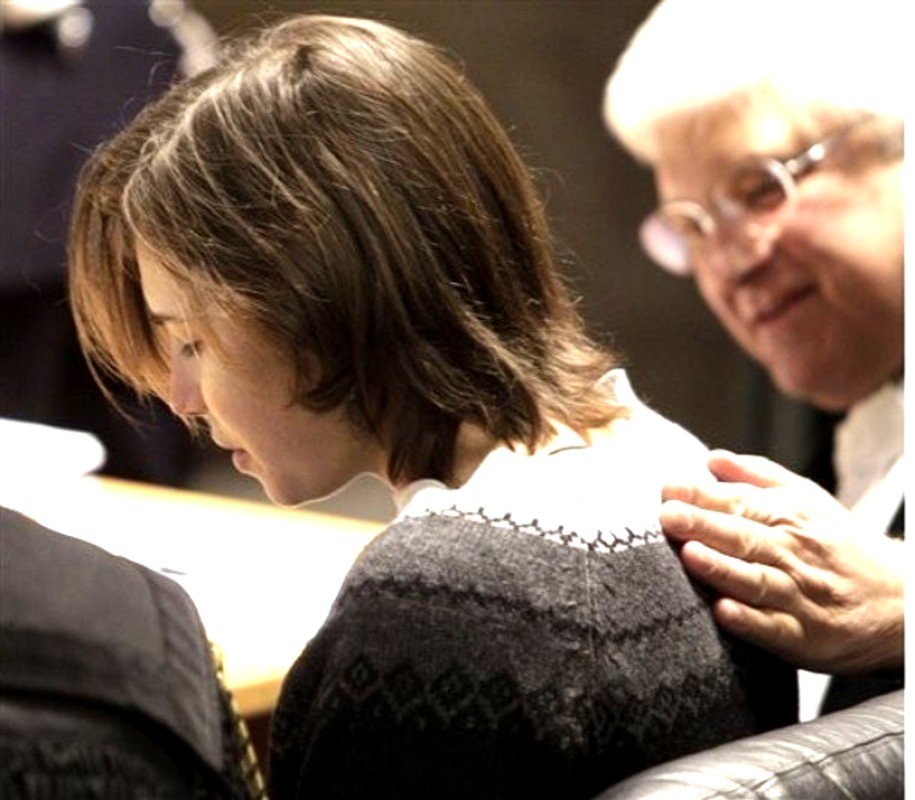
She sure has created an interesting cliffhanger.
Last Saturday Amanda Knox spoke from her seat beside her defense team and she was not subjected to cross-examination.
If she does choose to mount the stand to back up her claims with some testimony, she will be subject to cross examination, as will Raffaele Sollecito.
What may the judges and lay judges be allowed to deduce if neither of them mount the stand, or alternatively refuse to answer?
This involves the legal concepts of the Privilege against Self-Incrimination, the Right to Silence, and the Right to Lie.
In the US prosecutors are prohibited from commenting adversely on a defendant’s Exercise of the Right to Silence at trial, on the argument that doing so would violate the privilege against self-incrimination.
But this may be circumvented as demonstrated in the Duke lacrosse-team rape frame-up by the prosecutor.
The DukeLax prosecutor (echoed by many others in Durham and elsewhere) falsely alleged, publicly, a lacrosse-player “wall-of-silence” as persuasive evidence in favor of guilt, even when he knew full-well that the Laxers had transparently cooperated with prosecutorial investigators.
So much for “enshrinement” of the right to silence in the US.
There is no argument that in all three countries, Italy and the US and the UK, criminal defendants have the right to remain silent. This means that they do not have to speak in their own defence, if they choose not to do so.
However, Italy takes the privilege against self-incrimination such a giant step further that a guilty defendant, if given the choice, might be wise to choose trial in Italy, in preference to trial in either the US. or the UK.:
First, there is a significant difference between the use of the word “testify” in Anglo-American common law and its use in Italian law. Iin the former a testifying-defendant is sworn to tell the truth under oath and pain of perjury. Iin the latter, a defendant, when called to the stand, is not even “a witness”, and is not under oath:
According to the Italian Code of Criminal Procedure a defendant can be called to speak, but may refuse to “bear testimony”
Technically, a defendant does not “bear testimony”, or testify; a defendant is not even “a witness” ; in Italian, a witness is interrogato, whereas a defendant is esaminato and may refuse to answer many questions.
A defendant, in Italy, can also lie without fear of legal sanction.
Since a defendant does not take an oath and since a defendant is not technically a witness, if a defendant tells a lie, the defendant is not committing perjury.
A defendant can choose to make spontaneous statements to the Judge; and can tell whatever she/he wishes to tell and can choose not to answer any questions. In the Perugia case too, a defendant can lie without legal sanction.
So, if Amanda Knox speaks at her trial, neither the Judges, the Prosecutors, nor Defendant’s Counsel neccessarily expect her to speak the truth - they may expect her to lie her head off.
Prosecutors will not try to directly expose her lies so much as they will try to expose the contradictions in her various statements.
Amanda Knox’s prepared statement-to-the-court at her trial [as opposed to her testimony] restricted itself to the subject of the false accusations she made against Patrick Lumumba. This unsworn statement could not be submitted to cross-examination. Such unsworn statements are also possible in the other jurisdictions.
In the case of the Meredith;s murder there seems to be an ample supply of evidence showing their guilt, such as the multiple contradictions both between and within their statements.
Furthermore, even if no one, ever, comments adversely on these defendant’s exercise of the right to silence, think of Simon and Garfunkel’s famous “Sounds of Silence”
That song reminds us that finders-of-fact, at least subliminally, can hardly avoid being influenced by accused defendants’ silence.
Tuesday, December 14, 2010
What We Might Expect From Rudy Guede’s Second And Final Appeal Starting In Rome On Thursday.
Posted by James Raper
Rudy’s final appeal is going to start this Thursday.
This is his last appeal, having already been convicted and having already had his sentence reduced to take in to account the same extenuating circumstances accorded to Amanda and Raffaele, and the reduction which is accorded as a result of his opting for the fast track trial.
The Supreme Court of Cassation will not be hearing the evidence all over again or taking fresh testimony. Its function is to review the case and satisfy itself that the verdict of the lower court was sound. It can not overrule the trial court’s interpretation of the evidence, rather, it corrects a lower court’s interpretation or application of the law.
Accordingly it is difficult to see what we are going to get out of this last appeal.
Guede’s conviction (affirmed on first appeal) rests to a large extent on DNA evidence which looks particularly strong. As regards sentence it seems that he has already had all the reduction to which he is entitled.
If Amanda and Raffaele have their sentences increased (unlikely but possible) then it may follow that Rudy will have his sentence increased, and that might be a reason why his appeal is kicking off after the other two, though of course it is likely to conclude well before.
Most of us would of course like Rudy to tell us how it really was, simply because we believe that we already know what this would amount to and that it would totally undermine Amanda and Raffaele. However it would probably undermine Rudy even further and he is already serving for aggravated sexual assault and his lawyers’ advice might be that 16 years is not that much more than he would get for that anyway. In England the maximum penalty for this offence is 20 years.
I think that Rudy has already had the benefit of a tactical victory and that he will leave it at that. Also Amanda and Raffaele have benefited from this.
I appreciate the reasons for fast track trials but the effect in this instance seems to be to preclude the evidence from one trial from being heard (where relevant) in the other trial ( where, in all fairness, it would have to be tested again by those adversely affected).
It would be normal in the UK for three defendants on the same charge relating to the same incident on much the same evidence to be tried together on their “not guilty” pleas, without some good reason as to why there should be separate trials.
In that scenario, assuming that if Rudy had testified the other two would have done so too, then we would have had a three way cutthroat defence, which would have been interesting to say the least.
We may have got a little further in to motive. In fact we already have Rudy’s testimony (his spontaneous statement at his previous appeal) that Amanda and Meredith were arguing in the cottage over Meredith’s missing money and that this developed into a fight.
He did not say that at his fast track trial but I am pretty sure he would have during a trial of all three together. Also, here in the UK, you only get as much as a third off if you plead guilty. He got a third off even though he pleaded not guilty.
So overall there seems to be no advantage to him now to tell it as it was.
That is a matter between him and his conscience. He has already been called once to testify at Amanda’s and Raffaele’s trial where he refused to. I think that is highly unlikely that there are going to be any explosive developments as far as Rudy is concerned.
That was an opportunity lost in the system. Amanda’s and Raffaele’s appeal is the real focus of interest now
To me a third off just for a fast track seems to be a lot, especially given the system of automatic appeals. It was a very smart move by his lawyers - playing the system - but it also had the adverse effect, for the rest of us, of being unhelpful at getting at the truth.

